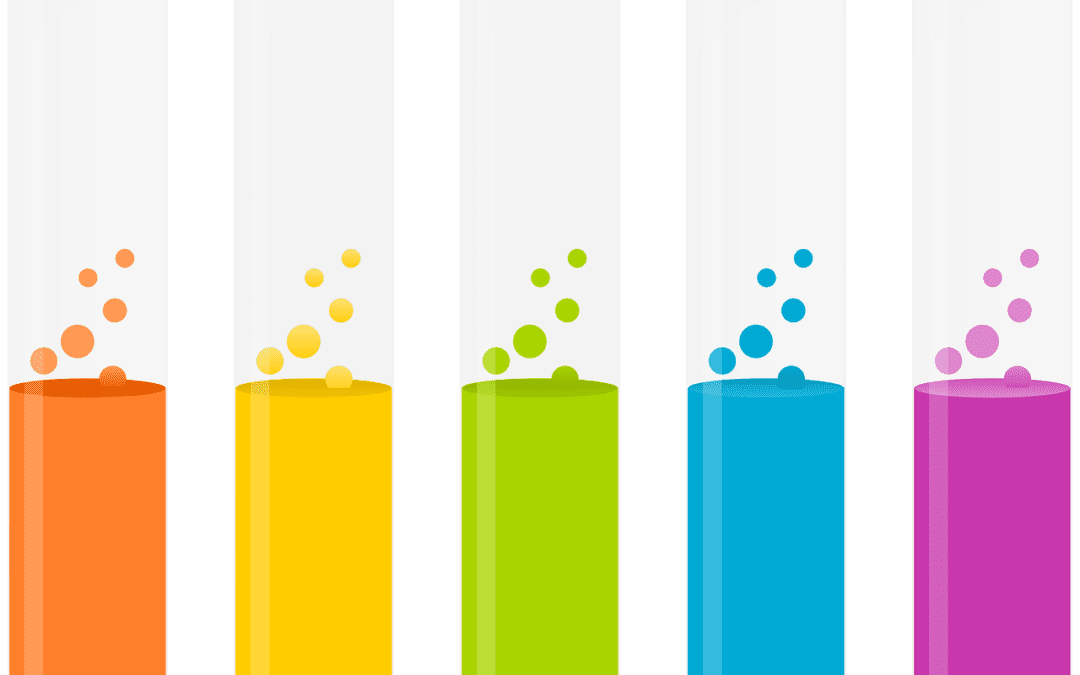Do you sometimes feel that you are flying blind with your online marketing strategy? You think you are making all the right marketing decisions, but you’re not sure if your audience agrees. If this is the case, you need to consider implementing A/B testing. This is one of the best ways to see if you are getting the most conversions from your marketing plan.

What is A/B testing?
A/B testing is one type of conversion rate optimization (CRO) that allows you to test different variables, one at a time, to see which one creates a higher conversion rate.
To conduct an A/B test, two variations of a variable are selected. You could use your current version as a control variable, and a new version as the challenger. Or you can choose 2 new versions of a variable to go head-to-head.
For example, you may want to test the locational success of a Call-To-Action (CTA) button that’s being inserted into a promotional email. Your current draft has the CTA button in the top left corner. However, you are wondering if a top right position will perform better. You can do A/B testing to see which one has a higher conversion rate. In either case, the variable of the Call-To-Action button stays the same, it is simply its location within your email that changes.
Now that you know what you are going to test, you need to know how to do the testing. Our next section explains the process in more detail.
A/B Testing – The Steps
1. Choose a Metric
Now that you know what you are going to test, you need to determine what a success looks like. Your success may take many forms, such as a particular behavior from your site visitors or a particular action you would like them to take.
Depending on what item you are testing, each success might look different. But knowing what the success goal will be will help you interpret the results at the end of the A/B testing.
2. Divide your audience
The next step is to divide your audiences. The idea is to have Audience A view Version 1 and Audience B view Version 2, then see which one performs better. In order to get meaningful results, Audience A and Audience B should be similar in size and a good cross-section of your full audience.
If you have control of your audience, such as a subscriber list, it will be easy to take a random selection of people to populate the two audiences. If you are testing a webpage and have less control over who your audience is, you can use tools like Google Analytics Experiments to help split your audience.
3. Aim for statistical significance
When doing A/B testing, you are choosing a sample of people to represent your whole audience. The sample size you end up choosing will affect how confident you are in the results. Sample sizes of 10-100 people are generally considered small and the results may not reflect what your audience actually thinks.
For a testing minimum, you want your results to have a confidence level of at least 95%. This means that you are 95% sure that your results reflect the feelings of your audience. However, this is a general rule of thumb. Depending on the importance of what you are testing, you may want a stronger confidence level than this minimum.
If you are interested in determining the statistical significance of your test, check out this free online calculator here.
4. Test Timing
When you conduct an A/B test, you want to limit as many outside variables as possible. This will ensure that the results of your testing are based on the variables you chose. This allows you to make an informed decision about whether to make that change or not.
When you conduct an A/B test, you want to limit as many outside variables as possible. Click To Tweet
One way to limit outside variables is to run your A/B testing at the same time. This means that whatever market conditions are impacting Audience A are the same market conditions that are affecting Audience B. By removing the market conditions variable from your testing, you can be more confident in the results.
As Lindsay Kolowich points out, however, the only time you would run tests at different times is if you are testing time itself. If you wanted to see if posting an article or sending an email gets more engagement being sent at Time A vs. Time B, then you would run two separate tests.
Final Thoughts
A/B testing is an important step in your marketing strategy. It allows you to ensure that your marketing plans are resonating with your audience and are helping your conversion rates. Small improvements here and there can have big impacts on your conversion rates and ultimately your bottom line. That is why it is important to test and to test often to make sure you aren’t behind the ball.
———-
In plain terms, WordPress (WP) is simply the top free platform upon which one can create
fantastic fully-featured websites or blogs of any size (best among both free or paid solutions).
Learn more about WordPress here.
***Gain more insight about how to install WordPress & your options.***
If you would like to consider working with us on our Premium or Standard Plans on a ongoing monthly basis, then we can do the job FREE as a trial (with no credit card required and assumes you have a interest potentially becoming a Standard or Premium Plan member . . . otherwise, please use the single one-off job option below).
See here: https://www.wpwebsitehelp.com/#plansandpricing
OR
2. If you only need us to do this one job only, then checkout here for this one-off single job.
See here: https://www.wpwebsitehelp.com/single-one-job/
Our plans can cover ongoing maintenance & annoying regular task items, of which, you should not spend your valuable time! This gives you peace of mind so you can focus your mind on your endeavor. We have you covered whether it is WordPress help or WordPress support for a business, personal, student, education, non-profit, or ministry endeavor.
Here are some examples along with HOW it works at WP Website Help.
Here are a few FAQ’s & our about us.
Jolene is a strong operations, compliance, and paralegal manager. She also loves to research and write about business as well as personal topics that help others.
Jolene @ The WP Website Help Team

